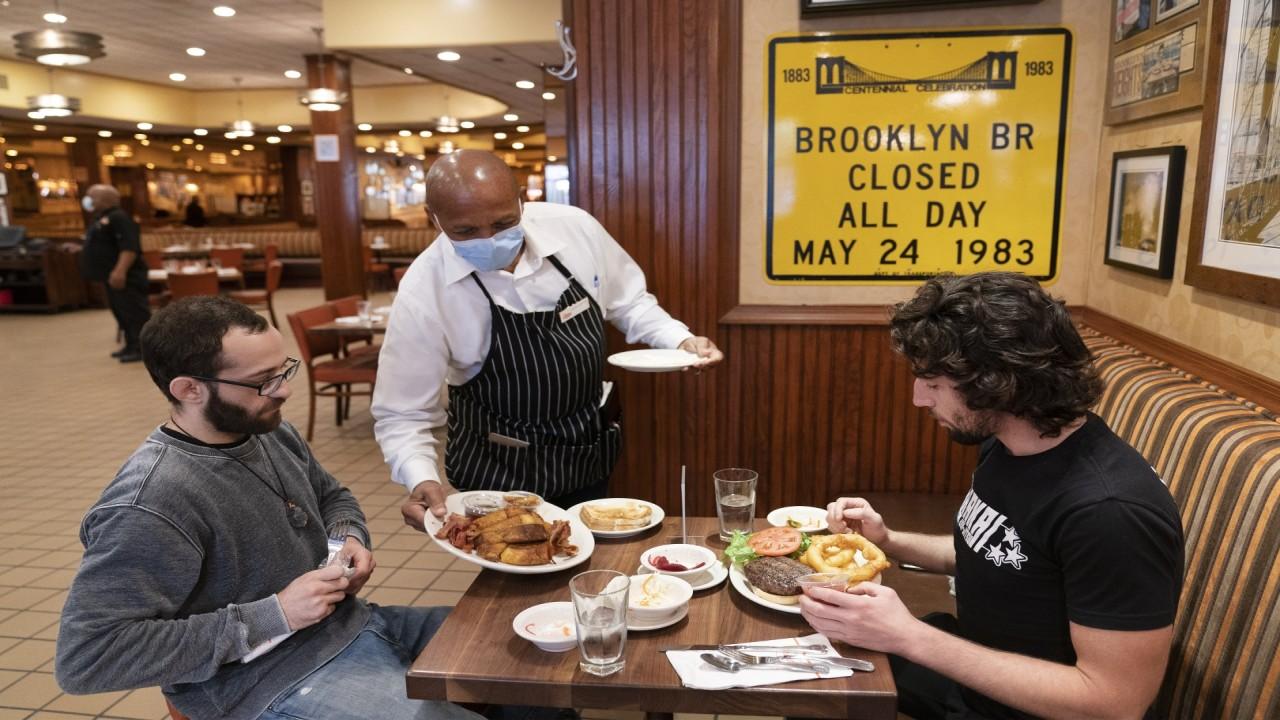Half of NYC restaurants, bars may close for good due to COVID-19: audit
About 3/4 of those employed in the city’s restaurant industry already found themselves jobless at height of the pandemic
As many as half of all New York City bars and restaurants could shutter permanently within the next six months due to the coronavirus, according to a stunning new audit released Thursday by state Comptroller Thomas DiNapoli.
RESTAURANT INDUSTRY LEADER: CORONAVIRUS AID URGENTLY NEEDED TO BATTLE 'FIGHT OF OUR LIVES'
The report lays bare the extent of the pandemic’s fiscal impact on one of the city’s lifeblood industries, which only saw a return to indoor dining on Wednesday — at a meager 25 percent of normal seating capacity.
“The industry is challenging under the best of circumstances, and many eateries operate on tight margins,” said DiNapoli. “Now they face an unprecedented upheaval that may cause many establishments to close forever.”
In the next half-year, a third to half of all city bars and eateries could fall past the point of no return, potentially taking over 150,000 jobs with them, DiNapoli found.
DINING 'BUBBLES' ARE THE LATEST CORONAVIRUS-ERA RESTAURANT TREND
Nearly three-quarters of those employed in the city’s restaurant industry already found themselves jobless at the height of the pandemic, according to the report.
In 2019, the city’s restaurant industry accounted for 317,800 jobs, paid out $10.7 billion in wages and made more than $27 billion in taxable sales, the report said.
By April, as the coronavirus gripped the city and government mandates nixed indoor service, the industry’s employment tanked to 91,000 jobs, according to the audit.
A city initiative to expand and expedite applications for outdoor dining — recently approved as a permanent, year-round program — helped boost employment numbers to 174,000 by August, DiNapoli found.
NEW YORK CITY RESTAURANTS RESTART INDOOR DINING WITH FINGERS CROSSED
Forty-three percent of restaurants and bars citywide had received outdoor seating permits as of the first week of September, the report said.
That included half of Manhattan establishments, 40-plus percent in Brooklyn and Queens, 30 percent in The Bronx and 20 percent on Staten Island.
But restaurants across the city remain on the brink with the financial hole dug over the past six months, the current 25 percent indoor capacity limit — with cooler temperatures on the horizon — and the possibility of a coronavirus resurgence very much in play.
The hardest-hit have been and would continue to be New York’s minority communities, the report found.
As of 2018, some 60 percent of restaurant workers living in the city were immigrants, with 44 percent Hispanic and 20 percent Asian, according to the report.
“It’s important that the state and city continue to be creative and bolster the industry,” said DiNapoli. “The city’s decision to extend outdoor dining year-round to help keep restaurants afloat is a step in the right direction along with opening for indoor dining.”
Shu Chowdhury, a restaurant operations expert and managing partner of investment and business incubation company Bowery Engine, agreed that the measures are a good start — but that much more needs to be done.
“While 25 percent occupancy is better than nothing, it is not sustainable for the business to operate profitably,” said Chowdhury. “It is however a good start to test safety procedures to smoothly and safely increase capacity as we approach colder weather that will reduce public interest in outdoor dining.
COLD WEATHER MEANS NEW CHALLENGES FOR STRUGGLING RESTAURANTS
“Public safety is and should remain a priority, but in the near future restaurants must be able to reopen at a minimum of 50 percent with extended hours in order to move towards safe and profitable operations.”
DiNapoli’s recommendations include that the city issue clear, easy-to-understand guidance to restaurants on reopening and work with the state to facilitate loans and grants to help joints keep the lights on.
The federal government, meanwhile, should step up with more funding after the August closure of the Paycheck Protection Program, DiNapoli found.

